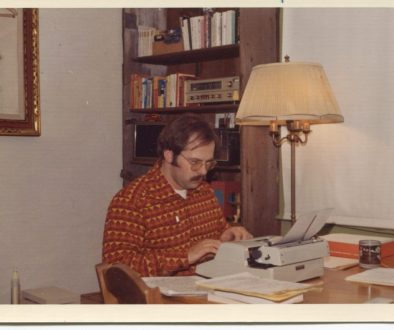On Literary Criticism and the Cult of Author Worship
Part I
If one needs to prove that popular attitudes toward writers has changed, taking a look back to the early 20th century when author bios on the book cover flap were rare if not absent, proves the point. Why? Because what mattered was between those covers: the storytelling. Rightly so, the public didn’t much discriminate based on an author’s renown, regardless of the novel – for that is our primary subject here – being their first or fifth or fifteenth. Not every book was a home run.

That was then, this is now: Booth Tarkington’s Wikipedia page.
That said, the Roaring 1920s changed perceptions to a great extent, as young writers and artists gathered in Paris (mostly because it was inexpensive to live there, but also because of the French bohemianism they found so attractive). Perhaps it was because so many writers and painters had gathered together in one place; it’s hard to know all the factors, but It’s fair to say Paris launched the cult of the artist as a cultural icon. (See my novel, Wild Blue Yonder, chapter 17, “Children of the Future,” the story of Dame Marion and Elspeth.)
Ernest Hemingway was without a doubt one of the most notable of those icons, due of course to writing both The Sun Also Rises and A Farewell to Arms during this 1920s Paris version of the Renaissance, and both before he was 30 years old. But as the new Ken Burns – Lynn Novick PBS biopic points out, Hemingway was also his own best publicist, bloviating certain events and aspects of his life way out of proportion. He boasted; be embellished; some said he outright lied. But no matter, the public ate it up.
Yet what becomes a famous artist most? In my opinion, itis their art. Whether we are talking about a writer, a painter, a sculptor or a musician, their unique artistry allows me to have direct contact with their imagination. I do not care if the artist Is male, female, of color, poor or rich, etcetera. I only care about the way their creativity expresses itself. As Hilton Als says in his New Yorker review of the Burns-Novick bio-flick, “what the writer has allowed me to have to myself (is) my imagination, prompted by his.”
Burns and Novick go to great pains to ignore this in favor of the popular conceit of deconstructing the artist. We should not be surprised, because it is quite difficult to make a six-hour long documentary about an artist doing their art. (Perhaps the only instance of this “l’art pour l’art” in my experience is Jacques Rivette’s 1990 film, “La Belle Noiseuse.”)
Yet in what way does airing the artist’s dirty laundry give us a better understanding of their art? It does not. It gives us something else. It gives us their personality. We learn about their human foibles: the good, the bad, the ugly. We might love an artist’s work, yet find aspects of their personal life quite unacceptable, even reprehensible.
In these (peculiar) times in which we live, seeing an expression of the author’s personality and behavior in their art is often the reader’s or reviewer’s hook in to the book they’ve written. Writers are scornfully (or in some instances admiringly) accused of writing novels that are autobiographical. This is no sin, nor a weakness of imagination or story. It’s what we do, because we’ve always been advised to write about what we know. So we tell our own story, but when we write it as fiction we take literary license with the facts. Certain things are emphasized, and others de-emphasized to enrich the story. People, places, events and things change to create more meaning than life’s simple everydayness.
I’ve only gotten halfway through my thesis, so this communique will be continued in the near future. I would love to hear your thoughts, so please share a Comment below.




